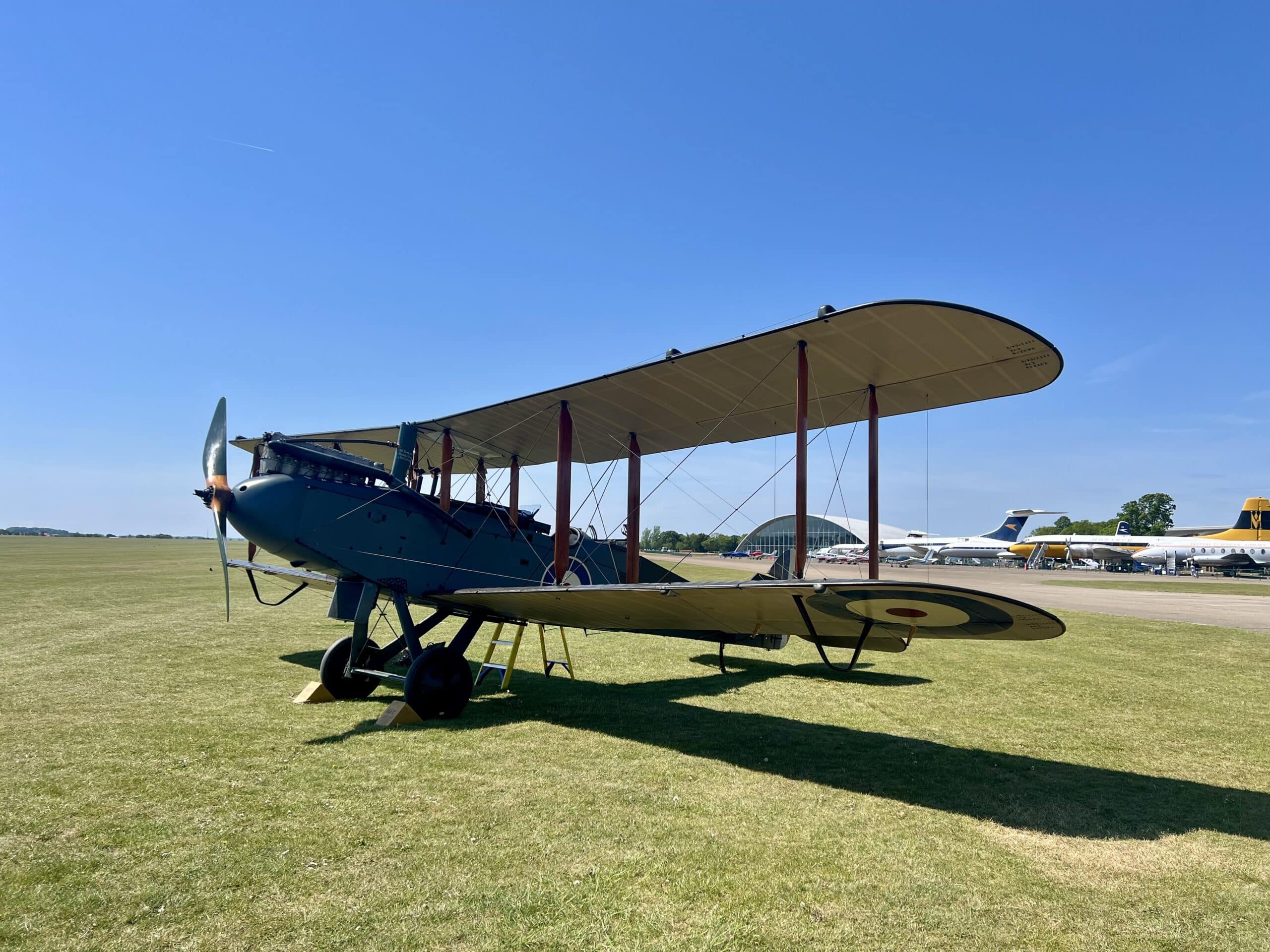De Havilland DH9
The Airco DH-9 marked a significant step in aviation history as one of the first purpose-built strategic bombers manufactured in Britain. Designed around the newly developed 200 hp Siddeley Puma engine, the DH-9 was intended to improve upon its predecessor, the DH-4. Despite challenges with the engine’s reliability, the DH-9 became one of the most produced aircraft of the First World War, with over 2,000 examples built.
The DH-9 was utilised in a great number of bombing raids over Germany and over the Western Front; it also saw service in an anti-submarine role, in the Middle East and Indian sub-continent. After the war, the aircraft’s versatility saw it adapted for various roles, including as airliners and long-distance courier aircraft, serving across the British Empire.
Despite its widespread use, few examples of the DH-9 survive today. Aero Vintage played a pivotal role in the discovery and recovery of two DH-9s in India after years of negotiation. These aircraft have since been carefully restored to preserve their historical significance.
E-8894, now registered G-CDLI, was restored to flying condition with an original engine, making it the only First World War bomber currently capable of flight and the sole flying example from the Imperial Gift Scheme. Its counterpart, D-5649, was restored to a non-flying, conserved condition and is now displayed in the Imperial War Museum’s Airspace hangar. Both restorations were completed to the highest standards in the Retrotec workshops in East Sussex.
The restoration of E-8894, completed in late 2018, ensures this remarkable aircraft’s place in aviation history as a genuine flying relic of the First World War and a testament to Aero Vintage’s dedication to preserving aviation heritage.
|
Type : |
Two-seater day bomber. |
|
Wing Span : |
42ft 6″ (12.90 m). |
|
Length : |
30ft 9½” (10.04 m). |
|
Power-plant : |
230hp Siddeley Puma. |

